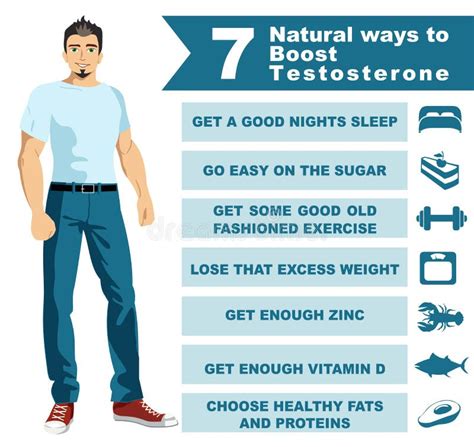Understanding Workout Splits for Optimal Gains
To truly maximize muscle growth (hypertrophy) and strength as a man, simply hitting the gym without a structured plan isn’t enough. A well-designed workout split is the cornerstone of effective training, dictating how you distribute your training volume and frequency across different muscle groups throughout the week. The goal is to stimulate muscles enough for growth, allow adequate recovery, and consistently apply progressive overload.

Foundational Principles for Muscle Growth & Strength
Before diving into specific splits, it’s vital to grasp the principles that underpin all successful strength training programs:
- Progressive Overload: Continuously challenging your muscles to do more – more weight, more reps, more sets, or shorter rest periods.
- Volume & Intensity: Finding the right balance. Volume refers to the total amount of work (sets x reps x weight), while intensity is how heavy you lift relative to your max.
- Recovery: Muscles grow when you’re resting, not just when you’re training. Adequate sleep and nutrition are non-negotiable.
- Consistency: Showing up and putting in the work consistently over time yields results.
- Proper Form: Essential for targeting the intended muscles, preventing injury, and ensuring safety.
Popular Workout Splits Explained
Several training splits are widely used, each with its own advantages and disadvantages. The “best” one often depends on your experience level, recovery capacity, and time availability.
1. Full Body Split (2-3 times/week)
This split involves training all major muscle groups in each session, typically 2-3 times per week with a day of rest in between.
- Pros: High frequency for each muscle group, excellent for beginners to learn movements, high calorie burn, good for strength development, allows for flexibility if you miss a day.
- Cons: Limited volume per muscle group per session, can be very demanding if intensity is high, requires careful exercise selection to avoid overtraining.

2. Upper/Lower Split (4 times/week)
Divides the body into upper-body days and lower-body days, usually alternating between them 4 times a week (e.g., Upper, Lower, Rest, Upper, Lower, Rest, Rest).
- Pros: Good frequency (each muscle group hit twice a week), allows for more volume per session than full body, effective for both hypertrophy and strength, flexible.
- Cons: Can be challenging to recover from two intense upper body or lower body days back-to-back, especially for advanced lifters.
3. Push/Pull/Legs (PPL) Split (3 or 6 times/week)
This split organizes exercises based on their movement patterns: “Push” muscles (chest, shoulders, triceps), “Pull” muscles (back, biceps), and “Legs” (quads, hamstrings, glutes, calves). It can be run 3 times a week (one cycle) or 6 times a week (two cycles).
- Pros: High frequency if run 6 times/week, allows for high volume per muscle group, logical grouping of muscles reduces overlap and aids recovery, excellent for hypertrophy and strength.
- Cons: 6-day split demands significant time commitment and good recovery; 3-day split might lack enough frequency for some.

4. Bro Split / Body Part Split (3-5 times/week)
Dedicates each workout session to one or two specific muscle groups (e.g., Chest day, Back day, Legs day, Shoulders & Arms day).
- Pros: Allows for very high volume and intensity for a single muscle group, popular among bodybuilders for “chasing the pump,” mentally satisfying to annihilate one muscle.
- Cons: Low frequency per muscle group (typically once a week), can be suboptimal for strength development and overall hypertrophy compared to higher frequency splits, recovery for a muscle group needs to last a full week.
Which Split is Best for Maximizing Growth & Strength?
For most men aiming to maximize both muscle growth and strength, the Upper/Lower Split or the Push/Pull/Legs (PPL) Split are generally the most effective choices.
- Upper/Lower (4 days/week): Offers a great balance of frequency and volume, hitting each major muscle group twice a week. This frequency is proven to be highly effective for hypertrophy and provides ample opportunity for strength gains through consistent heavy lifting.
- PPL (6 days/week): If you have the time, recovery capacity, and dedication, a 6-day PPL split is incredibly powerful. The high frequency combined with dedicated volume per session allows for rapid progress in both size and strength, provided you manage your recovery diligently.
The Full Body split is excellent for beginners or those with limited training days. The Bro Split, while popular, often lags behind in overall effectiveness for strength and hypertrophy unless you are an advanced lifter with very specific goals or enhanced recovery.

Factors to Consider When Choosing Your Split
- Experience Level: Beginners benefit from higher frequency (Full Body, Upper/Lower) to master movements. Advanced lifters might handle higher volume/frequency with PPL.
- Time Commitment: How many days a week can you consistently train? (2-3 days: Full Body; 4 days: Upper/Lower; 3 or 6 days: PPL; 3-5 days: Bro Split).
- Recovery Capacity: Are you sleeping enough? Eating well? Too much volume/frequency without adequate recovery leads to burnout and diminishing returns.
- Specific Goals: While most splits can build muscle and strength, PPL and Upper/Lower tend to be more efficient for both simultaneously for the majority.

Conclusion: Consistency is King
While the Upper/Lower and PPL splits often stand out as the most effective for men seeking to maximize muscle growth and strength, the “best” split is ultimately the one you can adhere to consistently. Choose a program that fits your lifestyle, allows for progressive overload, and supports adequate recovery. Pair your training with proper nutrition and sufficient sleep, and you’ll be well on your way to achieving your physique and strength goals.




